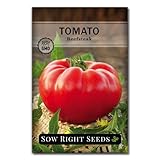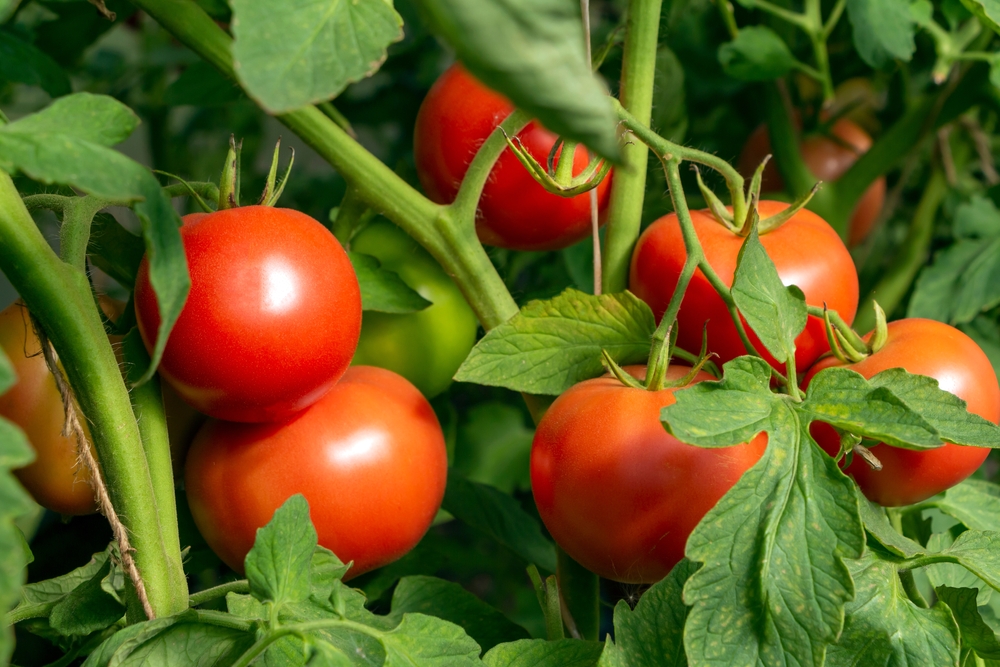| Question | What’s the best time of year to plant tomatoes in Idaho? |
|---|---|
| Answer | After the last frost date, typically late May to early June. |
| More Info |
|

The state’s diverse elevation means that some areas might experience later frosts than others. It’s advisable to start seeds indoors about 6-8 weeks before this period to ensure seedlings are robust enough for transplanting.
For those living in higher elevations, it might be prudent to wait even later into June or use cold frames and row covers to protect young plants. Successful tomato varieties in Idaho include those that mature early to mid-season to accommodate the shorter growing season, such as Early Girl, Celebrity, and Beefsteak.
Always check local extension services for the most accurate planting times specific to your location in Idaho.
Idaho’s Climate and Tomatoes
Idaho Hardiness Zones
Before planting tomatoes in Idaho, it’s important to understand the state’s hardiness zones.
Idaho has six hardiness zones, ranging from zone 3b in the northern part of the state to zone 7a in the southern part. Knowing your zone can help you determine the best time to plant tomatoes and which varieties will thrive in your area.
Temperature Variations
Idaho’s climate varies greatly from region to region due to its vast size and diverse geography.
The state experiences a range of climatic conditions, from arid desert in the south to humid continental in the north. These variations can affect the ideal planting time for tomatoes.
In general, the best time to plant tomatoes in Idaho is after the last frost date in your area. For most of the state, this falls between mid-May and early June.
However, if you live in a cooler area or at a higher elevation, you may need to wait until later in June or even early July to plant.
It’s also important to consider daytime and nighttime temperatures when planting tomatoes.
Tomatoes prefer daytime temperatures between 70 and 85 degrees Fahrenheit and nighttime temperatures above 55 degrees Fahrenheit.
If temperatures are consistently below these levels, tomatoes may not grow well or may take longer to mature.
By understanding Idaho’s hardiness zones and temperature variations, you can choose the best time to plant tomatoes and ensure a successful harvest.
Optimal Planting Times
When it comes to planting tomatoes in Idaho, timing is everything. To ensure a successful harvest, gardeners must plant their tomato seeds at the right time.
There are two optimal planting times for tomatoes in Idaho: spring and fall.
Spring Planting Guide
In Idaho, the optimal time to plant tomatoes in the spring is between mid-April and early May.
Gardeners should wait until the soil has warmed up to at least 60°F before planting their tomato seeds. Planting too early can result in stunted growth and poor yields.
To prepare for spring planting, gardeners should start their tomato seeds indoors about 6-8 weeks before the last frost date in their area.
This will give the seedlings enough time to grow and develop before being transplanted outside.
When transplanting the seedlings, gardeners should choose a sunny location with well-draining soil.
Tomatoes need at least 6-8 hours of direct sunlight per day to grow and produce fruit. Adding compost or other organic matter to the soil can help improve drainage and fertility.
Fall Planting Opportunities
In Idaho, fall is also a great time to plant tomatoes.
The optimal time to plant in the fall is between late July and early August. This allows the plants enough time to mature and produce fruit before the first frost.
To prepare for fall planting, gardeners should start their tomato seeds indoors about 10-12 weeks before the first expected frost date.
This will give the seedlings enough time to grow and develop before being transplanted outside.
When transplanting the seedlings, gardeners should choose a sunny location with well-draining soil.
Adding compost or other organic matter to the soil can help improve drainage and fertility.
Soil Preparation for Tomato Cultivation
Growing tomatoes in Idaho requires proper soil preparation to ensure a healthy and productive harvest.
Soil preparation involves testing the soil, amending it with necessary nutrients, and providing adequate mulching and fertilization.
Soil Testing and Amendments
Before planting tomatoes, it is essential to test the soil to determine its pH level and nutrient content.
Tomatoes grow best in slightly acidic soil with a pH level between 6.0 and 7.0. If the pH level is too low, add lime to the soil. If the pH level is too high, add sulfur to lower it.
In addition to pH level, the ideal soil type for tomatoes should be well-draining and loose.
To improve soil drainage, add compost, sand, or perlite to the soil mixture. These amendments will also improve soil fertility by adding organic matter and essential nutrients.
Mulching and Fertilization
fMulching is an essential step in tomato cultivation as it helps to retain soil moisture, regulate soil temperature, and prevent weed growth.
Mulch also adds organic matter to the soil, which improves soil fertility.
When mulching, use organic materials such as straw, leaves, or grass clippings.
Apply a layer of mulch about 2-3 inches thick around the base of the tomato plant, ensuring that the mulch does not touch the plant’s stem.
Fertilization is also crucial for tomato cultivation.
Tomatoes require a balanced fertilizer with equal amounts of nitrogen, phosphorus, and potassium.
Apply a slow-release fertilizer to the soil before planting, and then side-dress the plants with fertilizer every 4-6 weeks during the growing season.
Tomato Varieties Suitable for Idaho
When it comes to growing tomatoes in Idaho, it’s important to choose the right variety that can thrive in the state’s unique climate. Here are some of the best tomato varieties that are suitable for Idaho:
1. Early Girl
Early Girl is a popular tomato variety that is well-suited for Idaho’s short growing season.
This variety produces medium-sized fruits that ripen early, making it perfect for gardeners who want to harvest their tomatoes before the first frost.
2. Celebrity
Celebrity is another great tomato variety that can grow well in Idaho.
This variety is known for its disease resistance and high yield, making it a favorite among many gardeners. Celebrity tomatoes are also perfect for making sauces and canning.
3. Sweet Million
Sweet Million is a cherry tomato variety that produces clusters of sweet, juicy fruits.
This variety is perfect for snacking and adding to salads. Sweet Million tomatoes are also easy to grow and can thrive in Idaho’s climate.
4. Roma
Roma tomatoes are a popular variety for making sauces and canning.
This variety produces meaty, oblong fruits that are perfect for cooking. Roma tomatoes are also known for their disease resistance and ability to grow well in Idaho’s climate.
5. Sun Gold
Sun Gold is a cherry tomato variety that produces sweet, flavorful fruits.
This variety is perfect for snacking and adding to salads. Sun Gold tomatoes are also easy to grow and can thrive in Idaho’s climate.
Frequently Asked Questions
What is the ideal planting time for tomatoes in Idaho?
The ideal planting time for tomatoes in Idaho is after the last frost date, which typically occurs in late spring or early summer. It is recommended to wait until the soil temperature reaches around 60 degrees Fahrenheit for successful tomato growth.
Which month should I plant tomatoes in Idaho for the best yield?
For the best yield, tomato plants should be planted in Idaho during the months of May and June. These months are optimal for tomato growth and will result in a bountiful harvest.
How does Idaho’s climate zone affect tomato planting schedules?
The climate zone affects tomato planting schedules by determining the last frost date and the ideal soil temperature for planting.
What are the recommended dates for starting tomato seeds indoors in Idaho?
Depending on the type of tomato, it takes roughly 40-60 days to grow tomatoes from seed indoors and then transplant them to your garden. For a specific date that you should start tomato seeds indoors, find the last average frost date and then subtract 60 days from it.
Is there a preferred time for transplanting tomato seedlings outdoors in Idaho?
Transplanting tomato seedlings outdoors in Idaho should be done when the soil temperature has reached around 60 degrees Fahrenheit. This usually occurs in late spring or early summer, after the last frost date.
How do late frosts in Idaho influence the planting time for tomatoes?
Late frosts in Idaho can damage or kill young tomato plants, so it is important to wait until after the last frost date to plant tomatoes.
If a late frost is predicted, it is recommended to cover the plants with a protective covering to prevent damage.
Last update on 2025-06-06 / Affiliate links / Images from Amazon Product Advertising API







